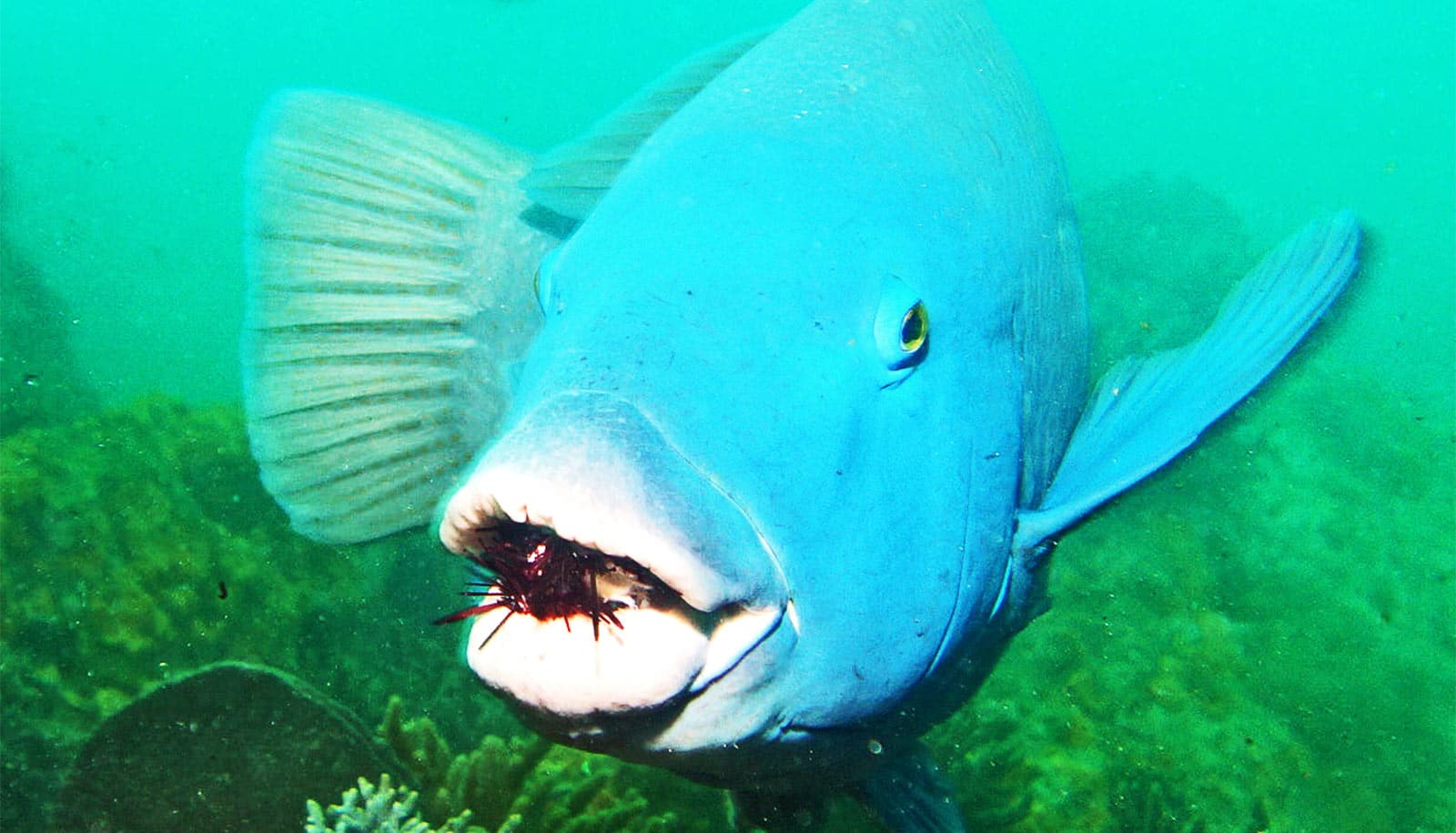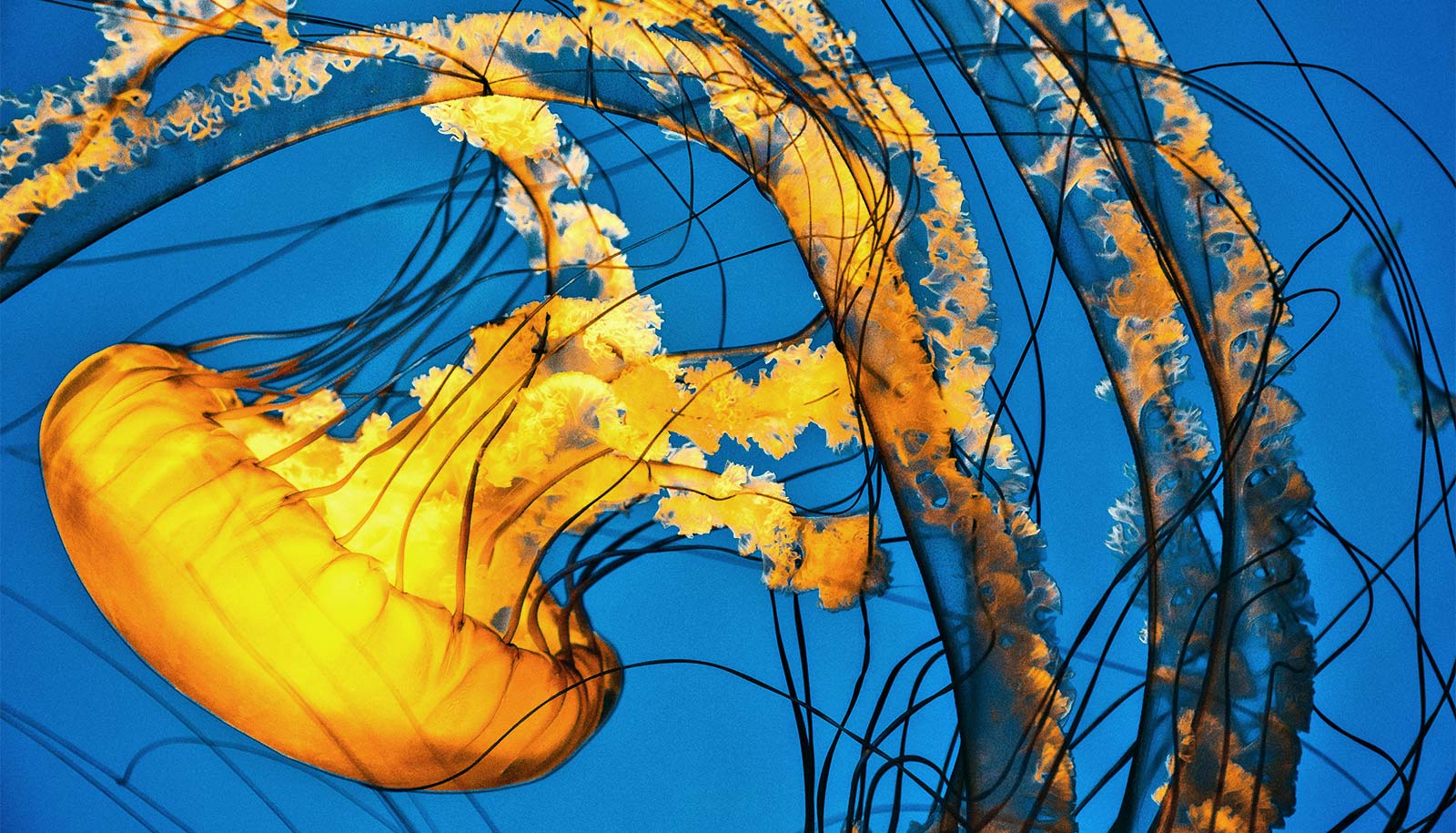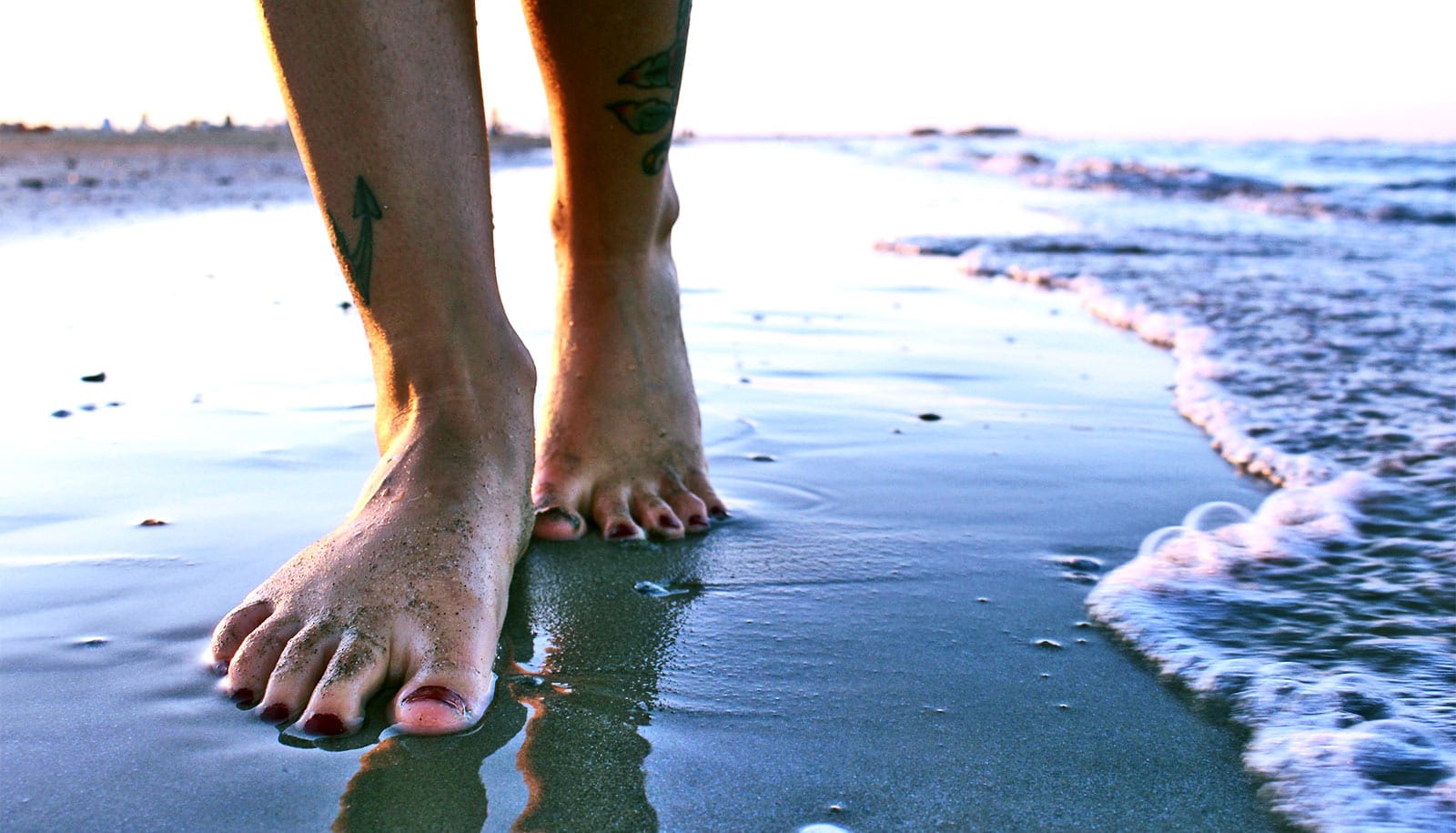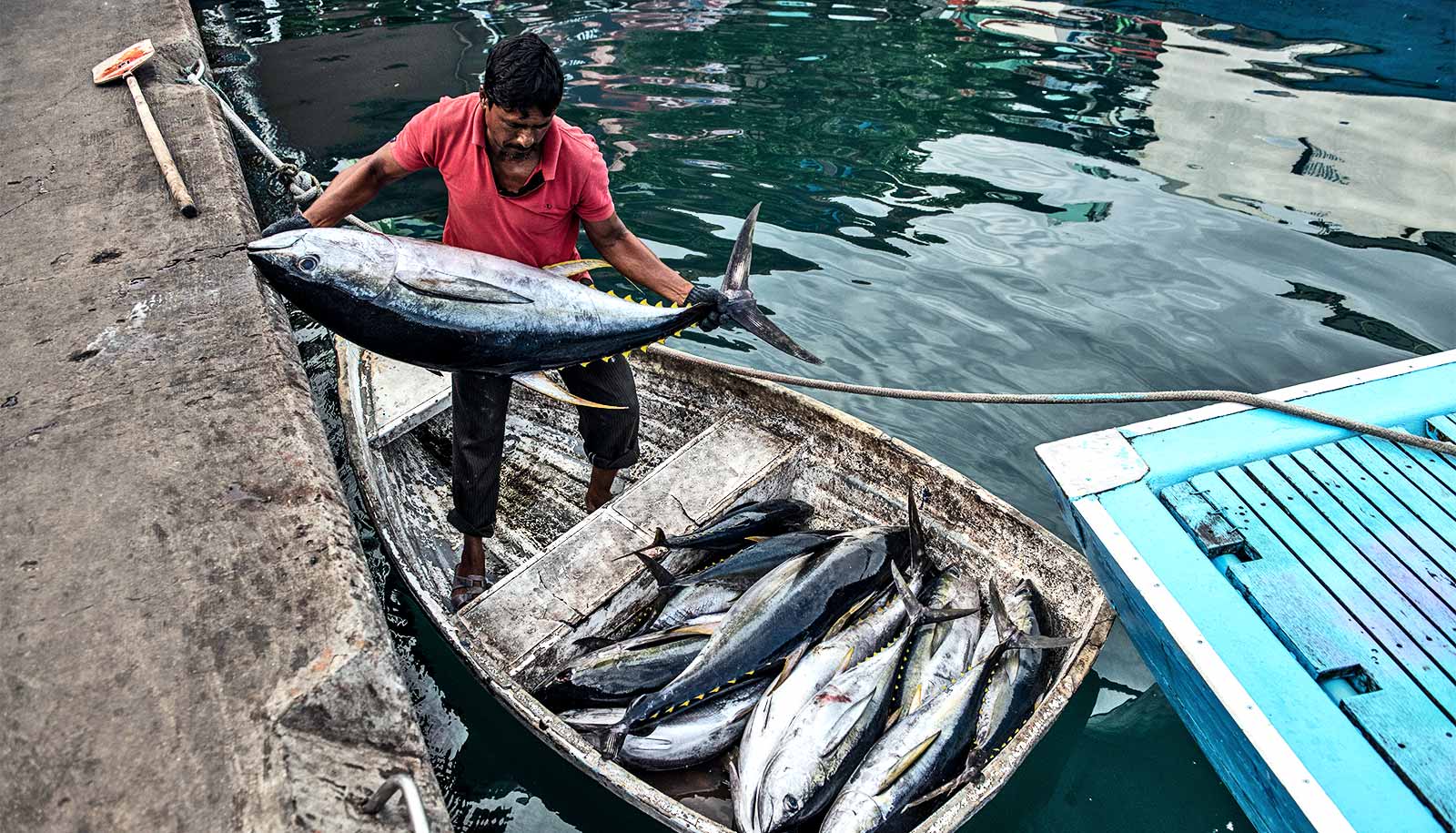Dried squid on sticks planted at 42 underwater sites have helped map how midsized predator fish are responding to and altering ecosystems in warming ocean coastlines around the world.
The testing and methodology for using lollipop-like bait described in the study in the Proceedings of the National Academy of Sciences was led by Ross Whippo, then a Smithsonian Institution technician and now a University of Oregon doctoral student.
The study’s international team of 65 researchers produced the first global “BiteMap” of the predators. Whippo worked closely with project leader Emmett Duffy, director of the Smithsonian’s Marine Global Earth Observatory program.
Duffy invented the squid pops, which resemble coffee shop cake pops, used as bait in the study after finding that fish and crabs, the primary predators studied, prefer squid.
“I was in charge of coordinating and conducting fieldwork that fulfilled the observatory’s mission of understanding coastal ecosystems and how they are changing,” Whippo says. “Director Duffy developed an assay to measure rates of feeding by fishes in near-shore environments. I did much of the field testing of these methods and helped standardize methods for measuring diversity and abundance of fish communities.”
That testing took Whippo to mangrove forests, coral reefs, and seagrass off Belize and Panama; Hawaii’s patch reefs; Tasmania’s seagrass and algal forests; and British Columbia’s kelp forests.
Warm temperatures are known to increase animal activities like eating. While biology textbooks have mapped patterns of temperature, rainfall, nutrients and plant growth, they hadn’t addressed predator feeding, notes coauthor Jay Stachowicz, professor of marine ecology at the University of California, Davis.
The researchers had expected to see predator activity at its peak in the heat of the equator. But instead predation peaked in the subtropics and happened the least near the poles
“We know that communities around the world are changing with climate warming,” Duffy says. “We might expect a soccer team, for example, to perform better in warm weather than in really cold conditions. But what if in the warmer conditions, the team switches out for different players? That can completely change the game.”
With support from the Smithsonian Institution and the Tula Foundation, researchers placed squid pops at sites in different water temperature zones off five continents, including at the South Slough estuary near Coos Bay. A day later they checked to see how many pops had been eaten. They also surveyed the types of fish and crabs present, using seine nets at 30 sites and video cameras at 14 of them.
While squid pops disappeared faster in warm water, temperature influenced what types of predators were at each site. Fish such as porgies, half-beaks, and grunts were among the most common animals caught on camera. They were mostly absent near the equator.
Whether the “BiteMap” applies to all other coasts needs to be determined, the researchers note. It may be, the researchers write, that the subtropics are a transition zone where warm-water and cool-water animals collide. At the equator, hot temperatures may cause a dip in the metabolism of predators or larger predators may be eating the fish and crabs that otherwise would feast on the squid pops.
Whippo had planned to pursue similar research, but COVID-19 has sidelined that idea. Instead, he has immersed himself in existing projects, including a survey of seaweed communities off the Western Antarctic Peninsula.
“I’ve been able to scuba dive in underwater locations never seen by human eyes and collect and describe the diversity and extent of seaweed around the peninsula,” he says. “The team is currently processing samples we collected and performing analyses of our findings.”
Additional researchers are from Oregon Institute of Marine Biology and the South Slough National Estuarine Research Reserve.
Source: University of Oregon



